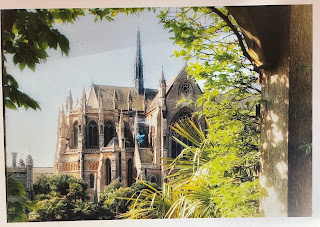An absolutely shocking experience trying to check into a hotel that I'd booked weeks before the long weekend, so I could try to see three beautiful castles in northern Ehime...
An aggressive, rude and downright nasty man greeted me at the front desk of Hotel Ohta in Ozu, demanding to see my passport for a photocopy to be made. No, sorry mate, I live here - and I'm a bit tired, as I've travelled from Fukuoka in a rush to get here on the last train. Response = he brandished a probably well-used laminated copy of some guidance dated 2002 that non-residents need to prove their identity...and told me to get out!
Me not budging, but Mr. Jobsworth in fury-mode stomping about ranting (but flipping a switch to check in apparently Japanese guests without asking for any proof of ID or residence in Japan - how would anyone know!?)...it's pretty hard to get a Japanese credit card which I used for my booking, by the way, even if you have lived here for 20 years...Maybe these other guests live in Singapoer, matey?
Long story short, this unsavoury individual spat the dummy rudely whilst talking to my wife (on my phone, with battery in the red after a day's work & an evening's travel) eventually calling her a 'noisy old crone' and hanging up on her. Unbelievable. So she called the cops (answered in Matsuyama - miles away, on a Sunday night, middle of a long weekend - they won't be up to much!) while I tried to stink out the lobby with my refusal to go anywhere. Incidentally, once that check-in paper signed, regardless of what else happens, the contract to stay has been established - particularly if you've paid in advance. Yes, my booking was on their computer. Stand your ground, travellers - there are NO police rules natioanl or local requiring copies be made of ANY documents.
About an hour later, I can hear him on the phone in his cubicle stage left, giving it the humble 'hai, hai, wakarimashita' routine = somebody just ripped him a new bumhole. My guess was the local koban (police box). Without any hint of apology, just my name (I had one now, I was 'gaijin' earlier) grunted and a room key grudgingly dangled over the counter. No eye contact or hint of humility - let alone customer care!
I had checked out other accommodation options whilst sitting there on the naughty step; nearest was 64km away by car. Figured I could find a bench at the station if needs be. I'd come all this way, probably only chance in a lifetime, and I wanted to see the castle!
The lights were flickering off at the castle by the time I'd yomped there (having dumped belongings in the room); and all the local restaurants were very closed by the time I'd yomped back again. Bento it was.
And the room? Not worth the effort - labelled non-smoking when I booked, but obviously not. It stank. Tiny, and I didn't dare sit on the chair - looked like someone had given birth on it. Absolutely disgusting.
Any thrill I had spotting Ozu Castle, brilliant lit up atop its hill earlier when my train rattled to a halt at the station...very much a distant memory. Fortunately, I needed to get out of there at first light to go photograph a very lovely rebuilt castle. Sadly, not many hotel options in this town, so I'm sure Mr. Angry will not be going out of business...must say, he's lucky to still have any teeth. I was in the mood, shall we say.


































.jpeg)








.png)







